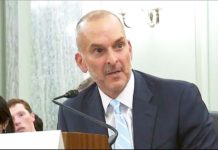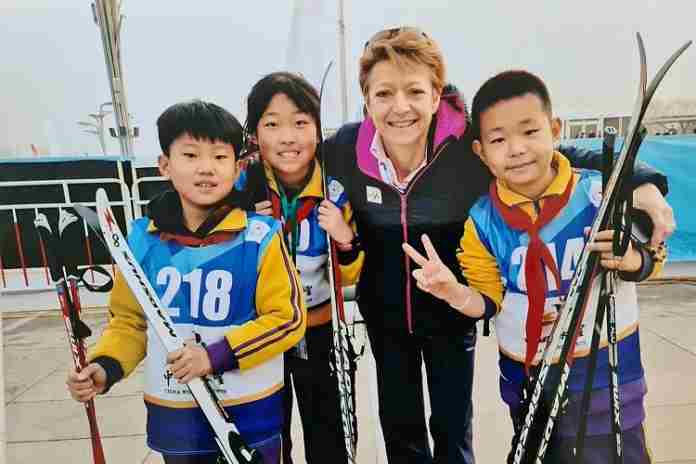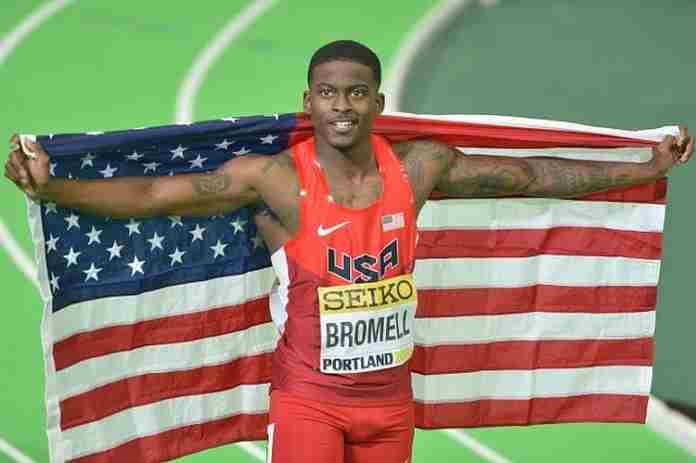(For our updated, 506-event,
International Sports Calendar for 2021, click here)
(For our Highlights of the weekend’s competitions, click here)
“So I have the vision to transform FIS, to become a global movement, for world skiing and snowboarding. The skills that I have, I’ll use them as a successful advocate, a promoter for FIS in our global community of national associations, our sport, most especially – always at the center – and our athletes.
“Really promoting us even further within the IOC, within the Olympic Movement, global sports landscape, and with new partners, with our existing partners, of course.”
~ Sarah Lewis, FIS Presidential candidate
There have been just four Presidents of the Federation Internationale de Ski (FIS) over the past 97 years – all men – from Sweden (Ivan Holmquist: 1924-34), Norway (Nicolai Ramm Ostgaard: 1934-51), and Switzerland, with Marc Hodler from 1951-98 and Gian-Franco Kasper, from 1998 to today.
On 4 June, the FIS will elect a new President as Kasper, 77, is retiring, after 23 years as Secretary General, followed by 23 years as President. Grim and gruff, Kasper could hardly be called inspirational, although the federation has prospered during his term.
Which way will FIS turn? The four candidates include:
● Swede Johan Eliasch, chief executive of the equipment and sportswear brand Head;
● Former World Downhill champ and Similasan chief executive Urs Lehmann (SUI);
● Swede Mats Arjes, a FIS Council Vice President from 2010-present, and
● Lewis, a 1988 Olympic Slalom and Giant Slalom skier for Great Britain who joined FIS in 1995 and rose to be Secretary General for 20 years until removed by the FIS Board in an internal rift in October last year.
Now Lewis is back and in a big way, with a sharply-honed message and a detailed Web presentation. But after the internal politics went against her last year, why? She is clear:
“Very importantly, I have been actively encouraged by national associations, by the snow sports, and the global sports community to pursue a candidacy, in order to fully represent everyone. Not just the elite nations, not just the emerging nations, everybody. the stakeholders as well: that means the ski industry, that means winter sports tourism.
“Look, I understand our sport, our federation, inside and out, from all perspectives, and I think, most importantly, I’ve got an international vision. I am not tied to any nation; I’ve worked now internationally for 27 years.
“I’ve been an Olympic athlete, I worked in the ski industry – alongside when I was an athlete, as a trainee, and then ran my own company as well as worked through the ski industry, I worked through the ski media, I was a volunteer team manager for the English national junior team, and where I originally came from, then I was the national association director for four years before I then started to work for FIS, directly after the Lillehammer Games. First of all in a technical function, as the coordinator for the Alpine Continental Cup [competitions], building up this global series of the five global Continental Cups, and then took over as Secretary General, initially the Director in 1998 and then Secretary General in 2000, for 20 years.”
Over a 52-minute interview, it was hard to get a word in edgewise, as Lewis enthused over her vision of creating a much broader skiing and snowboard community worldwide, with an impressive grasp of specifics:
● “FIS will undergo a complete digital transformation to strengthen its commercial potential, to harness innovations, to showcase the outstanding athletes, the iconic competition venues, to excite fans, to inspire young people, new participants around the world to ski, to snowboard, to be part of our sport. Maybe only digitally, but hopefully also be trying it themselves. And basically, things are limited at the moment to nations who have [TV] rights holders; they’re already fans, and the potential to do some much more is absolutely crucial.”
● “We absolutely have to have wider visibility in promotion of our sport, of the athletes growing and interacting with the global fan base is a priority, partner activation, high-profile athlete ambassadors through the Athletes Legends Club that we’ll set up … generating revenue through the rights to the World Championships and World Cup events, aggregating those rights through investment from private equity.
“This represents an opportunity to bring in new resources, not just tapping out the loyal sponsors who have been part or the organization for 10, 20 or more years. So working with the national associations and their organizers as shareholders with a proven commercial partner who is ready to invest in the sport and grow its value. That’s the reason they get involved. So this is an exciting opportunity.”
She saw the failure of the proposed European Super League in football – with its promised private-equity financial bonanza – as a lesson in governance: “We will not achieve anything like the European Super League did, then you just fall flat on your face. We have to do this together.”
● “[eSports] is a very strong part of my program. It does stimulate interest. Also, through digitalization, we are going to create a big community. … I mean they don’t have to participate necessarily, it will be a reason to do it: eSports and around eSports, so we’re going to connect the practicing recreational skiers.
“You know the global market is currently about 150 million skiers. … There’s no reason why winter sports, why skiing, can’t be the football of the winter sports. Not everybody will be able to do it, but not everybody can play football either. But you can enjoy watching it, you can enjoy following it, you can find some sort of connection to it, and from so many different angles.”
This is a fascinating insight into the future, one that Lewis is insistent on. And it makes sense as a pathway to skiing that could change its place in the sports world.
As FIS Secretary General, Lewis played a role in the development of the current game for alpine skiing – noting, “without the help of the leadership, very much against it” – and sees the opportunity for new games for cross country, ski jumping, the Nordic Combined, and the freestyle and snowboard events.
As a way to reach non-skiers in Africa, Oceania, South America and elsewhere, this could be a pivotal moment. It is not hard to imagine that once launched, a full-size, week-long world championship for e-skiing and snowboarding could be held during the summer, with prize money and all the rest, as a promotional platform for those who ski in person and/or on a computer. It could make skiing and snowboarding a truly year-round sport.
It’s also a potentially explosive promotional opportunity for U.S. Ski & Snowboard, which continues to be one of the world’s top powers in Freestyle Skiing and Snowboard, but which has seen less and less success at the FIS Alpine and Nordic World Championships. At the 2021 Worlds, the U.S. had one medalist in Alpine (Mikaela Shiffrin) and none in Nordic (comprising Cross Country, Nordic Combined and Ski Jumping).
The feeder system for ski and snow sports is much different than for the big summer sports. At the high school level, just 21,030 students competed in skiing or snowboarding in 2018-19 compared to 1,093,621 in track & field. At the collegiate level, NCAA track & field programs had 60,589 participants in 2020 as a feeder program directly to U.S. Olympic and World Championships teams. NCAA skiing is sponsored by just 34 schools across all divisions, with 434 total athletes, and coordination between the federation and colleges is just now accelerating. Might digital skiing be the key which creates interest in U.S. youngsters the way EA Sports’ Madden NFL game does for American Football, with national championships held in ski and snowboard resorts where the players can try the real thing?
The eSports development experience crystalized for Lewis the need to run for FIS President. As Secretary General, her ability to create change was limited; she was first and foremost responsible to implement the decisions and directions of Kasper and the FIS Council (which he dominated). As President, she can lead, and wants to.
“So, my overall vision is for us to transform FIS to become, really, a global movement for world skiing and snowboarding. From being a very good, stable International Federation, organizing of great competitions, with thanks to outstanding organizing committees, national associations, very professional people. But that’s been the main platform and the main focus.
“Now in addition to that, we’ve got the capacity to really grow FIS. That’s the foundation of [my] FIS Piste Map, which is the basis of the strategic plan for us to take the organization into a new, exciting future. For FIS to become a modern, versatile, diverse organization, for the national associations to be fully integrated into the governance of FIS, doing things together we will achieve more.”
This kind of evangelical zeal for the future of skiing and snowboard is well beyond the staid countenance of Hodler or Kasper, but is in line with today’s promotional efforts; if you stay quiet, you stay behind. But Lewis is well aware of the pitfalls:
“We will not be boxing and weightlifting. We will make sure the FIS leads with integrity, with diversity, and with all of the necessary values. And there’s no question we’re going to reach out and use the outstanding experts we’ve got in the organization, within the Council, within the committees, to increasing the athlete engagement and, of course, welfare, safety, injuries – there’s too many. We have a fantastic athlete’s commission, Hannah Kearney (USA), a former Moguls Olympic champion, multiple World Cup champion, World Champion as well. She is the co-chair, but it’s only kind of an overall commission. We need sub-commissions, down in the disciplines, getting their elbows rolled up and really involved in the governance of their own discipline too.”
Lewis faces formidable opposition, but what is fascinating is that everyone feels the urgent need to do more and expand the FIS impact. Arjes, a FIS Council Vice President since 2010, has said, “I am proposing an immediate review and consultation process, which will identify where we can improve and what tangible action we should take.” Eliasch has suggested better, more compelling broadcasts as a key to growth. Lehmann is the chief executive of the Similasan heath and beauty products company and would step back from his work there to concentrate on the FIS Presidency if elected (he is currently the head of Swiss Ski). He is also emphasizing better broadcast formats, more competitions outside of Europe and expanding new markets.
All of the candidates are spending a lot of time in front of their computers, talking with voters at the national federations, sharing ideas and trying to earn trust. The FIS election will be a revealing window into the minds of its members, whether to continue with expanding its existing programs, or to embrace a wider vision. If the national federations decide that this is the time for an evangelist who – also – already knows everyone in the sport, Lewis is ready and willing.
Rich Perelman
Editor
(Thanks to reader and retired U.S. Ski & Snowboard Communications Director Tom Kelly for noting a typo: the FIS Presidential election will take place on 4 June, not 5 June as originally shown. Thanks, Tom!)
You can receive our exclusive TSX Report by e-mail by clicking here. You can also refer a friend by clicking here, and can donate here to keep this site going.
For our updated – as of 1 May – 506-event International Sports Calendar for 2021 and beyond, by date and by sport, click here!


























